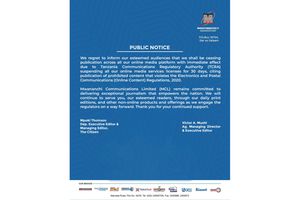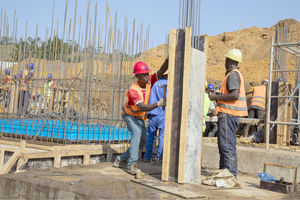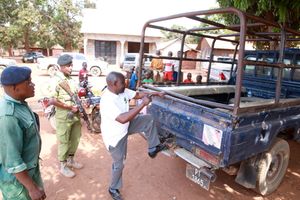Prime
‘Makinikia’ and economic liberation: The untold story – 10

What you need to know:
- TMAA’s financial audit-focused mandates became a duplication of the roles of TRA.
Last week we recounted the story of the efforts of the Tanzania government to become more accountable and transparent through the Tanzania Extractive Transparency Initiative (TEITI) that was reconciling the revenue received by the Government to the payment made to the government by extractive companies and publish for public consumption.
The other initiative that was instituted during the 2007 reforms was the establishment of the Tanzania Mineral Audit Agency (TMAA) to audit and report production and exports of minerals.
This move was a follow-up action of a previous initiative that responded to the mantra of blame from the public resonating that miners were illegally repatriating minerals abroad without paying the rightful taxes.
The citizenry claimed that minerals were being flown by private planes out of the country directly from the mines unregulated.
By 2003 the government responded by constructing a private company - Alex Stewart Assayers Government Business Corporation (ASGBC) in addition to the mandates of the Commissioner for Minerals to inspect, audit and regulate exploration, mining, production and exports of minerals.
The TMAA was then created by transforming the Mineral Audit Section that previously was a Gold Audit Program that took over the ASGBC mandates.
The TMAA began to audit capital investment and operating expenditure and supervise gold, production and exports from large scale gold mining operations and later expanded its operations to all other minerals including industrial minerals and building materials.
However, over time, the TMAA’s financial audit-focused mandates became a duplication of the roles of the Tanzania Revenue Authority (TRA) and undesirably it was superfluous.
The TMAA also extended into regulatory and supervisory role into mining, mineral trading and export, environmental control, revenue collection, etc. duplicating once again with the mandates of the Commissioner for Minerals as mandated by the Mining Act 2010.
Apart from the agency being an expensive activity for the government, it also traumatised the mining industry with multiple and duplicated regulations and auditing similar to that of the TRA, and therefore its important financial responsibilities in the mining industry require refocusing.
Again, during the mining reforms of 2007 through 2010 a decision was made to transfer TANSORT a diamond sorting and valuing unit that was based in the UK from London to Dar es Salaam to enhance regulation and supervision of diamond and gemstone mining, production and exports.
As discussed in the previous articles (Makinikia: The Untold Story – 2), TANSORT was established in 1965 by the First Phase Government to sort and value diamonds from the Mwadui Williamson mine; that was operated under a JV company William Diamond Limited (WDL) Company between the Government of Tanzania (50 percent) and the De Beers Company from South Africa (50 percent).
The First President of and Father of the Nation broke diplomatic relationship with the Apartheid South Africa and stopped all trade relationships with South Africa except the De Beer-Tanzania diamond investment and had to establish a sorting unit in London to sort the diamonds before being sold to the market.
In 2009 TANSORT Office led by a Director was established in Dar es Salaam and began to sort and value diamonds and gemstone including tanzanite from the Mirerani mine to ensure legal compliance in production, trading and exports of diamonds and gemstones to foreign markets.
Back to the narratives on the implementation of the new statutes of 2009/2010.
The policy and law stipulated that small to medium-scale gemstone mining was 100 percent exclusively set aside for Tanzanians and if a large-scale gemstone deposit was discovered and needed foreign capital and technology, a 50 percent equity local (state or private) and 50 percent foreign equity would be required to make the investment and the Minister responsible for mining would provide a special permission to invite the required foreign capital and technology.
In 2012, under this requirement the State Mining Corporation (STAMICO) took a 50 percent stake in the Mirerani Tanzanite Mine in Arusha that was 100 percent owned by TanzaniteOne Company of South Africa.
Mineral trading was also set for a mandatory not less than 25 percent local equity. In other words foreigners were not allowed to trade minerals in Tanzania without a 25 percent or more shareholding with a local partner.





